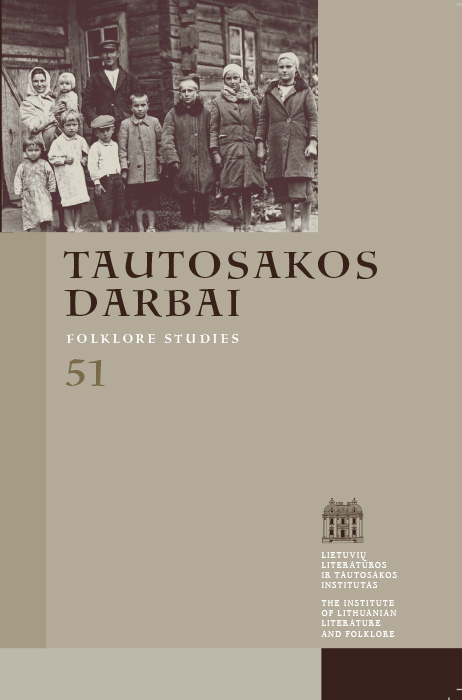Gėrimų vartojimas kaip bendrystės reprezentacija XVII–XVIII a. bajoriškojoje kultūroje
Santrauka
Gėrimai ir jų vartojimo papročiai užima išskirtinę vietą socialinėje (iš esmės – žmonių bendrystės) istorijoje. Tačiau alkoholinių gėrimų vartojimo papročiai Lietuvoje (beje, kaip ir visa kasdienybės istorija ir ypač dvaro kasdienybės kultūra) yra mažai tyrinėti. Straipsnio objektas yra kultūros antropologijos pobūdžio tyrimas, svaigiųjų gėrimų vartojimas kaip priemonės, turinčios (sudarančios sąlygas pasiekti) gilesnius religinio, socialinio, ekonominio ar kitokio pobūdžio tikslus. Dėl didelės tyrimų objekto apimties ir menko jo ištirtumo apsiribosime tik vienu jo aspektu – gėrimo iš vienos taurės papročio analize vieno Lietuvos Didžiosios Kunigaikštystės socialinio sluoksnio – bajorijos – kultūroje XVII–XVIII amžiuje. Tyrimo tikslas – suprasti šio papročio ištakas, kaitą ir reikšmę to meto žmonių socialumui (bendrystei).
Atsisiuntimai
Skaitomiausi šio autoriaus(ų) straipsniai
- Rimvydas Laužikas, Tradicija ar (ir) kūrybos laisvė: patiekalų receptų „genealogija“ Lietuvoje , Tautosakos darbai: T 53 (2017)
